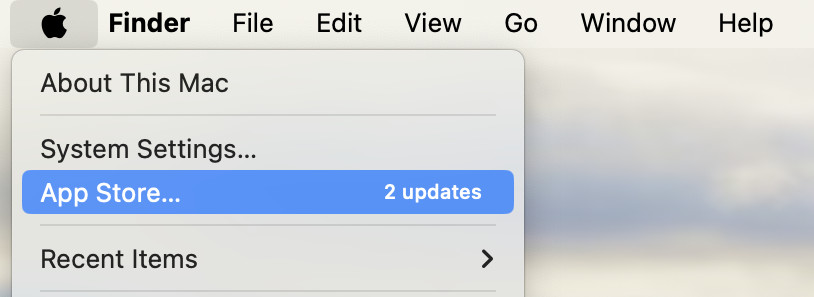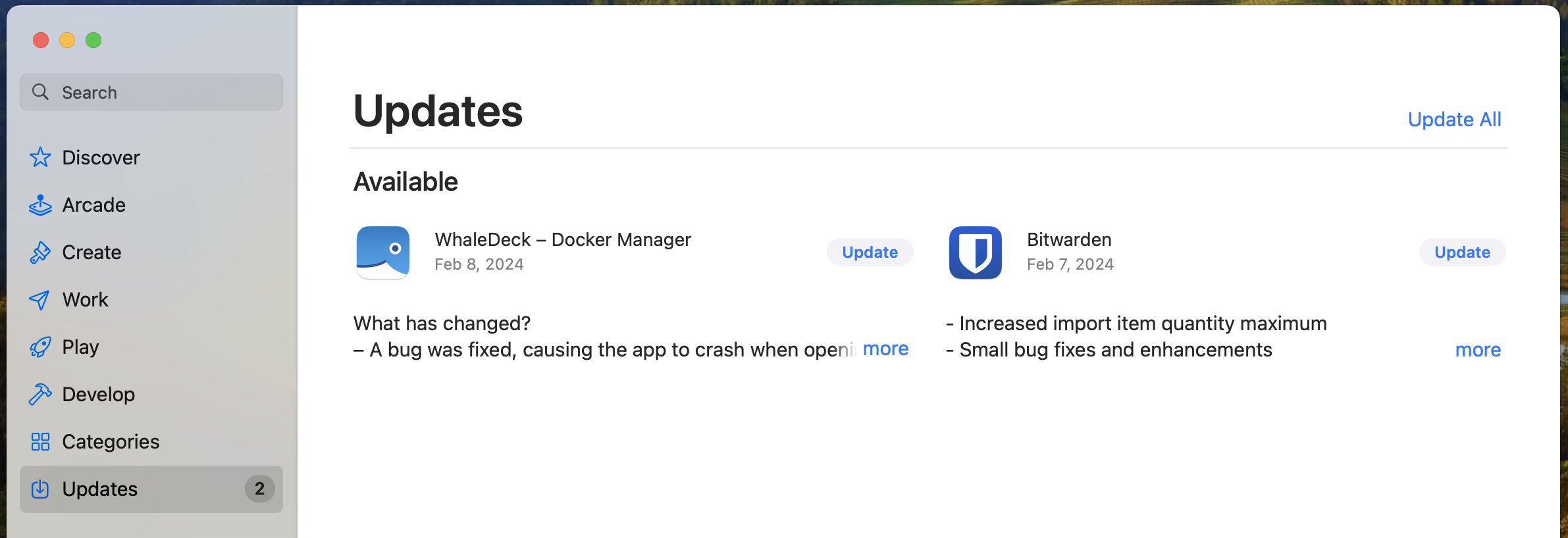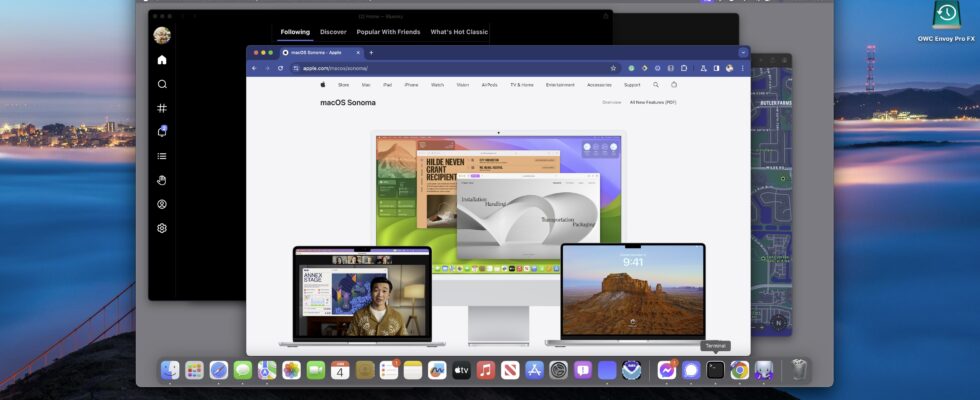Screenshot by Jason Perlow/ZDNET.
It’s a basic rule of cybersecurity, but it’s always worth remembering: when an update is available, it is advisable to install it as soon as possible. For what ? First of all because it contains the latest security patches which help to best protect your devices. But also because the updates contain a whole bunch of new features that can improve your experience, in terms of performance or reliability.
On macOS, there are several ways to install updates for the apps you use: using the App Store or through the terminal. The first is the simplest and most accessible method. But if like me you’ve spent years working in Linux, you might as well be comfortable running a few command lines.
Whatever your preferred method, here are the two ways to do it.
Method 1: Update apps from the App Store
To use this method, you need a Mac and an Apple ID.
1. Open the App Store
To check for updates, click the apple in the upper left corner of the screen. You will then see in the menu if one or more updates are available. You can directly click on the notification announcing “x update(s) available” to open the App Store.

Two app updates are available. Screenshot by Jack Wallen/ZDNET.
2. Update your apps
Once you are in the App Store, you can update the applications one by one, by clicking on the button To update associated with each application, or all at the same time, by clicking on Update all.
Once the update(s) have started, you may be prompted to close an application before you can proceed. In this case, close the application in question, return to the App Store and click Continue in the warning window.

Two applications for which updates are available. Screenshot by Jack Wallen/ZDNET.
Once the updates are complete, close the App Store. You have finished ! All you have to do is enjoy the latest version of your applications.
Method 2: Update apps from Terminal
This method is a little more technical. First of all, you need to check which apps have an update available. Above all, remember that like on Linux, application names are case sensitive in command lines.
1. Open the Terminal app
To run command lines, you must first open the terminal. To do this, click on Launchpad, then type “terminal”. Then click on the application to open it.
2. Check if updates are available
To check if application updates are available, you need to use the command software update. This command will be used to both check and run updates.
Enter the following command:
sudo softwareupdate -lThe password sudo is then required. This is your macOS user password.
The “-l” option means “list”. It displays all available application updates and, if applicable, informs you if a reboot is required to complete recent operating system updates. If you see such a warning, be sure to restart your computer to complete the process.
3. Update your apps
Take the example of Apple’s email application, Mail. An update is available for this app, which is listed as Mail (case sensitive!). To get started, close the application, then enter the following command:
sudo softwareupdate -i Mailenter your password sudo to start the update. Once completed, you may need to restart the computer (you will be notified).
You can then reopen the application to take advantage of its new features and/or more security thanks to the latest update fixes.
Source: ZDNet.com
